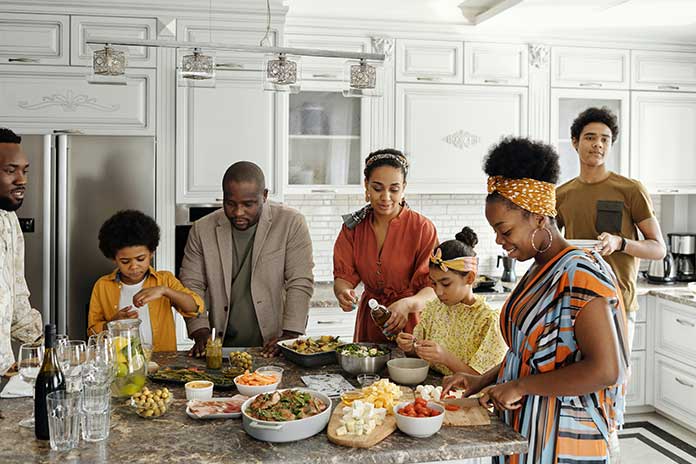The positive points of food planning involve financial, health, nutritional, social, and logistical aspects.
When we plan our food, we save financial resources since it becomes possible to prepare food at home and transport it when necessary, avoiding eating expensive snacks with low nutritional value.
In addition, the meal becomes more enjoyable, since we can choose the food, unlike when you go to a store when it’s time to eat and need to rely only on the local options.
The amount and concentration of nutrients in a food, especially vegetable foods, will depend on the unit stages of its production chain, such as planting soil, storage, preparation, and cooking. By scheduling your diet and preparing your meals, you can maintain a higher concentration of nutrients in your food by taking some precautions.
Table of Contents
We Gain Or Stop Spending Hours On Meal Planning
If we dedicate a little time to preparing meals at the beginning of the day, we will have everything ready when the time comes, saving that precious currency: time in the kitchen.
Health
Consequently, the individual’s health is the best and most significant benefit. Once we have foods with more excellent nutritional value, we can save time and financial resources with programming.
A hectic routine with a scheduled time for all the tasks of the day, a week that flies by, and day after day with no time for anything are already the reality for the vast majority of Brazilians – from children to older adults.
In this situation, non-essential activities may end up receiving less attention. But what would non-essential activities be?
The essentiality of activity will depend on each person, as each of us has our priorities. Thus, some people organize themselves, so they only have time to dedicate themselves to work, while others choose to dedicate themselves entirely to their families. But, if you need to take care of your home, family, and work and still want to take care of food, know what is needed to have a healthy life, preventing physical and emotional illnesses.
Manipulate Time To Your Advantage
How your healthy diet and your eating plan will happen should be considered according to the available time. Each one has a period to use in food, which will be decisive in several aspects, such as the time available for acquiring, storing, preparing, and consuming meals, that is, your healthy eating schedule.
Conditions For Carrying Out Meals
These are entirely different situations when the individual has adequate space and utensils for a quiet meal and when there are not ideal conditions, as in the case of a person having to eat walking down the street because he has neither time nor conditions.
Analyze your possibilities: if you can make meals at home or if you need to transport everything ready to work, as well as if you need to eat standing up or if you can count on a structure similar to a kitchen. These aspects and more will influence your meal plan.
Food Preferences, Healthy Foods, Choices, And Budget
Healthy eating is a need for your body, whether you are an athlete or a passive person, a child or an older adult, but we have to admit that it is getting more and more expensive to find healthy ready-to-eat foods in stores.
Also, not all healthy foods are well-accepted by your taste buds.
Therefore, knowing where you can find your healthy diet items and making a price and quantity budget is an excellent tool to lower your food cost.
Tips For Weekly/Monthly Food Planning
Time will always be the determining factor for everything. For this reason, start by analyzing your available time for food, but don’t think in a limited way.
The time you spend eating is not just those minutes you stop activities from eating the meal.
You must understand that time spent at the market buying and home stores, and preparing must also be factored into this equation.
By analyzing the available time, you will determine where meals will be made and how they should be prepared or pre-prepared; if you are going to eat at home, if you can take food and prepare the meal at work, if you have to take everything ready and eat it cold, as there is nowhere to heat it, etc.
Make a healthy menu with breakfast, lunch, dinner, and intermediate snacks.
Use the prepared menu to determine the per capita amount of each meal so that the list has the exact amount of all foods and the name of each item.


